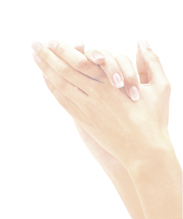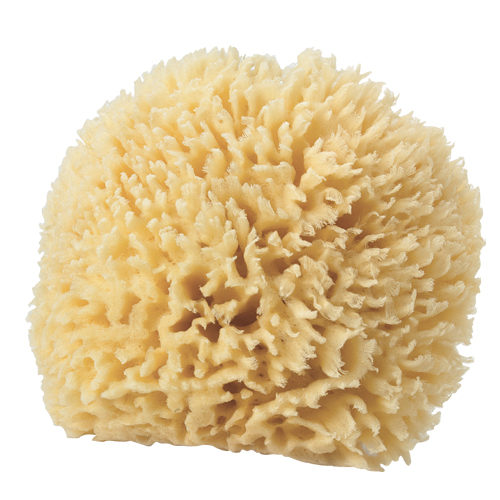|
A sunscreens has two
purposes. Firstly it helps the skin maintain moisture and its own natural
oils which can be lost through exposure to the sun's radiation. Secondly, a
good sunscreen protect the skin against UVA and UVB rays. It is said that
the reduction in the atmosphere's ozone layer has made these rays more
damaging. The body's own defense system to sunlight causes skin pigment
cells, called melanocytes, to synthesize increasing amounts of
melanin, which is what a tan actually is, gives our skin a protective
pigmentation. It may not be quite enough these days, especially if you are
fair-skinned or have a family history of skin cancer.
Take Care Tip: If you
use perfume oils, avoid citrus oils - such as bergamot, orange, lemon or
lime. They may cause unpleasant skin reactions when exposed to the sun. They
also reduce a sunscreen's effectiveness.
Sunscreen Lotion Recipe (Natural-Protection
Cream)
3 tbsp. unrefined sesame
oil
1 tbsp. unrefined avocado oil
1 tbsp. unrefined jojoba oil
1 tbsp. walnut or almond oil
1 tbsp. shea butter
2 tbsp. cocoa butter
1 tsp. beeswax
1 tsp. soya-lecithin
2 tbsp. aloe-vera gel
2 tbsp. rose or lavender water
1/2 tsp. borax powder
20 drops carrot-seed essential oil
3-5 drops coconut fragrance oil (optional)
-
Melt the first 4 oils,
butters and beeswax in a double boiler over medium heat until just melted.
Add the soya-lecithin, and stir to blend. Remove from heat.
-
In a small saucepan,
gently warm the aloe-vera gel and rose or lavender water, and stir in
borax powder until dissolved. Remove from heat.
-
When the oil and water
mixtures are still warm to the touch and about the same temperature, set
the small saucepan into a bowl of ice. Drizzle in the oil mixture while
mixing rapidly with a small whisk; a cream will quickly form.
-
Add carrot-seed
essential oil and coconut fragrance oil if desired; blend thoroughly.
-
Store in a clean,
airtight jar or bottle, and refrigerate.
For After-Sun Relief
-
To help reduce
inflammation and cool and moisturize sunburned skin, apply a thin coat of
yogurt or aloe-vera gel to reddened areas.
-
Spray pure lavender
water or hydrosol freely on sun-damaged skin to keep skin hydrated, help
prevent peeling and promote the regeneration of cells.
-
Add 2-3 drops of
lavender oil to 1 tsp. of a carrier oil, such as sweet-almond oil, and
massage onto affected area. Or apply diluted St. John's wort oil.
No Such Thing As A Safe
Tan
To protect your skin from
harmful UVA radiation, use a suntan lotion with a high sun protection
factor. Lotions with plant-based oils, such as vitamin E-rich avocado oil,
have enhanced effectiveness. Vitamin E helps prevent premature skin aging
due to sun exposure. Remember, there is no such thing as a safe tan. Use
common sense, and always avoid any overexposure to the sun.
What is UVA and UVB ?
Although benefits of UVA
protection may seem limited in current sunscreens, the lotions are still
useful for protecting against UVB rays and should continue to be used. The
power of the sun can seem hard to avoid in the heat of the summer, but by
following safe sun practices and taking care to protect vulnerable skin, the
risk of developing skin cancer can be minimized.
Australian researchers found that UVA rays caused DNA damage to the cells
deep within the skin. It is this layer of cells that regenerates our skin
and it is feared that damage to the DNA of these cells may increase a
person's risk of developing skin cancer. according to new research,
while useful for protecting against UVB rays, lotions are less protective
against harmful UVA.
They discovered that the
UVA protection offered by leading sunscreen brands was not what might be
expected. Furthermore, even when sunscreens were applied in the recommended
concentration, they afforded much lower protection against the
melanoma-inducing and skin-ageing UVA light than against UVB.
Application:
As well as containing
moisturizing properties, avocado, sesame oil and shea butter contain a low
SPF sunscreen. However, they have only a limited UVA/UVB-filtering ability,
thus you should not use them as your only skin protection. For a natural
sunscreen with a higher SPF. use a commercial sunscreen with titanium
dioxide.
Ingredient Benefits:
Perish ability and storage: To keep homemade sunscreen from spoiling,
use only clean utensils for preparation and storage. Store lotions in the
refrigerator, where they will keep for about three to four weeks.
Proper application:
To achieve maximum protection from the sun, apply sunscreen to dry skin 30
minutes before exposure. Limit your sun exposure time to less than one hour;
actual amount of time depends on your skin type.
Skin types: There are four basic skin types, each with a different
level of tolerance to sun exposure. People with light skin and blond or
reddish hair are Type I and their natural protection time (amount of time
skin can be exposed to the sun without burning) is 5-10 minutes. The natural
protection time for people with skin Type II, who have a somewhat darker
complexion, is up to 20 minutes. People with skin Type III and IV, those
with much darker skin tones, can stay in the sun for 30-40 minutes. To
determine how long a sunscreen will protect you, multiply your natural
protection time by the SPF. Of course, if you have a family history of skin
cancer, you should always use a sunscreen with a high SPF.
Hydrosol - The condensed water that is left behind when plants are steam
distilled to make essential oil. A little like waters made from roses and
lavenders and other herbs, except more pure and a little more concentrated.
You can make your own waters, just by steeping an herb in warm water and
straining. Or, you can purchase hydrosols.
Source:-
http://www.a1-natural-beauty.com/Sunscreen_Lotion.html
Natural-Protection
Cream
-
3 tbsp. unrefined
sesame oil
-
1 tbsp. unrefined
avocado oil
-
1 tbsp. unrefined
jojoba oil
-
1 tbsp. walnut or
almond oil
An
easy recipe for natural sunscreen:
Note: This recipe will leave a white nose
“lifeguard style.”
1 Tbs zinc oxide
1 1/2 tsp light sesame oil
1 Tbs rosewater
Mix together the zinc oxide and sesame oil.
Heat the mixture gently, using a double
boiler, and stir well to mix. Remove from
heat and slowly add the rosewater, as you
continue stirring. Allow to cool completely,
and store in a clean container with a tight
lid, in the fridge. Yield: 2 oz. Keeps: Up
to 10 days in the fridge.
Notes on Zinc Oxide:
Zinc oxide has been used as the natural
blocking agent as it is the only ingredient
synthetic chemical or natural to effectively
provide comprehensive protection against UVB
and both short and long UVA radiation.
Zinc oxide is the closest thing to a total
sunblock on the market today. It uniformly
covers from 290 to 380 nm, thus protecting
against UVB and most of the UVA spectrum. No
other sunscreen ingredient provides broader
protection.
And unlike many chemical sunscreen agents,
zinc oxide is never irritating. In fact, it
is recognized by the Food and Drug
Administration as a Category 1 skin
protectant, meaning that it is safe for
compromised or environmentally challenged
skin.
Zinc oxide has over a 300-year history of
safety, with no known adverse reactions
(which is why it is often used to treat
babies). Now, in its microfine form, it is
ideal for use in sunscreens and daily
moisturizers.
Commonly Titanium Oxide is used in
sunscreens. This should be avoided as it is
considered a carcinogen (Titanium
Oxide is a photo-activator that can react with
other sunscreen chemicals and promote their free
radical production or their cancer forming
abilities. Recent studies have shown that Titanium
damages the cells’ DNA and it has been listed as a
potential carcinogen).
Sesame oil can block or reduce about 30% of the
burning rays, coconut and olive oils about 20%
and Aloe Vera also inhibits 20% of the rays of the
sun.
Aloe vera gel can be used as part of the water
measurement and you can add 5 drops of lavender and
myrrh for a delicious scent

|
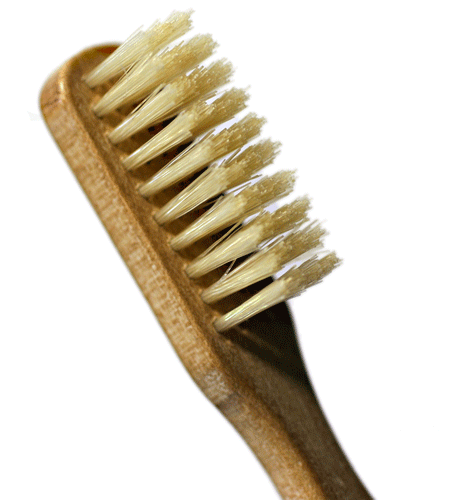 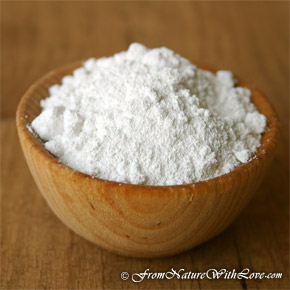  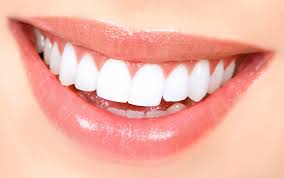   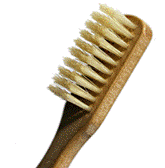 |
|
Toothpaste
Recipes
Notes:
Do NOT use lemon or baking powder, as these can damage your teeth, as
any dental professional can tell you. Most teeth whitening methods
should not be continued for prolonged periods or the enamel may be
damaged. Also, remember that any food or beverage that can stain a
white t-shirt, can stain your teeth.
Some of
the ingredients and why I use them:
Glycerine (Vegetable) - Base
Clove - mild aesthetic, for toothache
Peppermint/Spearmint - Pleasant taste & fresh breath
Thyme - Treat gum disease
Cosmetic clay - Mild abrasive
Baking Soda - Whitener
Vodka - Preservative & Solvent (Use with caution, there is
some evidence that mouthwashes with a high alcohol content may have
other health problems)
Myrrh - gum inflammation & mouth sores (Oil and tincture are
used. To make myrrh tincture, ground up 60g resin in a mortar and
pestle until it is a fine powder, and place in a sealed glass jar with 1
cup of 120 proof vodka. Place the jar on a shelf for 6 weeks.
Than open the jar and poured the contents through an unbleached muslin
bag to remove the residue).
|
Recipe
1
Ingredients:
6 teaspoons bicarbonate of soda (pure baking soda) -
Not baking powder
1/3 teaspoon salt
4 teaspoons glycerine
15 drops peppermint
Directions:
Mix thoroughly. Should be a tooth paste consistency. For flavour you can
add a few drops of peppermint or wintergreen. Store in a
container.
|
Recipe 2
Ingredients:
6
teaspoons
bicarbonate of soda (pure baking soda) -
Not
baking powder
1/3
teaspoon salt
4
teaspoons glycerin
15 drops
peppermint or wintergreen extract
Directions:
Mix thoroughly. Should
be a tooth paste consistency. Store in a container.
|
|
Recipe 3
Ingredients:
6 teaspoons baking soda
1/3 teaspoon salt
4 teaspoons glycerin
15 drops peppermint
Directions:
Mix thoroughly. Should be a tooth paste consistency. For flavour you can
add a few drops of peppermint or wintergreen. Store in a container.
You'll be surprised with how fresh your mouth feels.
|
Recipe 4
Ingredients:
1/4 tsp peppermint oil
1/4 tsp spearmint
1/4 cup arrowroot
1/4 cup powdered orrisroot
1/4 cup water
1 tsp ground sage
Directions:
Mix all dry ingredients in a bowl. Add water until paste is desired
thickness / consistency. Store at room temperature in a tightly covered
jar.
Substitute 1/2 tsp each of oil of cinnamon and oil of cloves for
peppermint/spearmint if desired.
|
|
Recipe 5
Ingredients:
1/2 ounce powdered
chalk
3 ounces powdered orris root
4 teaspoons of tincture of vanilla
15 drops oil of rose geranium
Honey, enough to make a paste
Directions:
Combine all ingredients and mix until you have a paste the consistency
you like. Store in an airtight container. Use a clean stick (popsicle)
to scoop paste onto brush. Store the stick in same container.
|
Recipe 6
Ingredients:
Small amount of
finely powdered sage
1 ounce of finely powdered myrrh
1 pound powdered arrow root
3 ounces powdered orris root
20 drops oil of lemon
10 drops oil of cloves
12 drops oil of bergamot
Directions:
Rub oils into the powdered ingredients until thoroughly mixed.
|
|
Recipe 7
Ingredients:
Bicarbonate of soda
Salt
Water
Glycerine
Peppermint oil
Directions:
Mix 3 parts bicarbonate of soda with one part salt. Add 3 tsp of
glycerine for every 1/4 cup of this mixture, then add enough water to
make a thick paste. Add a few drops of peppermint oil for better taste.
|
Recipe 8
Ingredients:
1 Tsp of the Powder
from recipe 9
1/4 Tsp Hydrogen peroxide
Directions:
Mix into a paste and brush as usual. |
|
Recipe 9 -
Tooth powder
Ingredients:
2 Tbsp dried lemon or
orange rind
1/4 cup baking soda
2 Tsp salt
Directions:
Place rinds in food processor, grind until peel becomes a fine powder.
Add baking soda and salt then process a few seconds more until you have
a fine powder. Store in an airtight tin or jar. Dip moistened toothbrush
into mixture, brush as usual.
|
Recipe 10
Ingredients:
1 Tsp of the powder
from recipe 9
1 Tbsp crushed ripe strawberries
Directions:
Mix strawberries and powder into a paste and brush as usual. |
|
Try these
simple tooth cleaners:
1.Rub a lemon rind on
your teeth to remove brown stains. Rinse your mouth thoroughly
afterward.
2.Clean your teeth with a fresh strawberry. Rub it over and between your
teeth.
|
|
Tooth
Whiteners
|
|
Recipe 1
Ingredients:
1 Tsp baking soda,
1/4 Tsp hydrogen peroxide
1 drop oil of peppermint
Directions:
Mix to make a paste, dip toothbrush into mixture, brush as usual.
|
Recipe 2
Ingredients:
Hydrogen peroxide (a few drops)
Baking soda
Directions:
Make a paste by combining the two ingredients. Use this paste on your
teeth and also gently rub along your gums two times a week.
|
|
Notes:
Do NOT use lemon or baking powder, as these can damage your teeth, as
any dental professional can tell you. Most teeth whitening methods
should not be continued for prolonged periods or the enamel may be
damaged. Also, remember that any food or beverage that can stain a
white t-shirt, can stain your teeth.
 
Mouthwash
recipes
Basic mouthwash
Wash your
mouth with half a glass of warm water containing a teaspoon of
table salt.
|
Baking Soda
Mouthwash
Mix 2 ounces
of Water, 1/4 Teaspoon of baking soda or Sea Salt, 1 drop of
Pure Peppermint Oil, and 1 drop of Tea Tree oil. This Homemade
mouthwash recipe leaves a great refreshing minty taste in your
mouth and helps prevent bad breathe.
The above are
some of the best homemade mouthwash recipes. Hope you
like them. Please send your feedback (look at the bottom of this
page).
|
Rosemary-Mint Mouthwash
Ingredients:
2 1/2 cups distilled or mineral water
1 tsp fresh mint leaves
1tsp rosemary leaves
1 tsp anise seeds
Boil the water, add herbs and seeds, infuse for 20 minutes.
Cool, strain and use as a gargle/mouthwash. If you wish to make
up a larger quantity, double or triple the recipe then add 1 tsp
of tincture of myrrh as a natural preservative.
|
Spearmint Mouthwash
Ingredients:
180ml water
60ml vodka
4 teaspoons liquid glycerine
1 teaspoon aloe Vera gel
10-15 drops Spearmint essential oil
Boil water and vodka, add glycerine and aloe Vera gel. Remove
from the heat, let cool slightly. Add spearmint oil, shake well.
Pour into bottle, cap tightly.
|
|
Myrrh Mouthwash - for sore mouths
Myrrh is
great for oral sores/ulcers (including cold sores), and
bleeding/diseased gums. It is a bitter oil, and must be
diluted for use.
To make a
mouthwash, combine:
90ml
Vodka
10 drops
Myrrh
10 drops
Peppermint
2 drops
Lemon
2 drops
clove
2 drops
thyme
This
gives you a concentrate. When you want to use it, add
10-15ml (2-3tsp) to half a glass of warm water and rinse as
with any other mouthwash.
Tip:
Myrrh oil is also good combined in a lip balm to treat cold
sores. (Never apply the oil directly).
|
Sensitive Teeth
Toothpaste
-
Vegetable Glycerine, 1/2 cup
-
Cosmetic clay, white, 1/2 cup
-
Tincture of myrrh, 35-40 drops
-
Peppermint or Spearmint 7-8 drops
-
Clove
essential oil, 7-8 drips
Mix all
the ingredients thoroughly. Adjust the quantity of glycerine
to get toothpaste consistency. Store in a wide mouth bottle.
|
|
Tea Tree Mouthwash
1 cup
Warm water
1/2
teaspoon Myrrh tincture
few drops
Tea Tree Oil
few drops
Peppermint or mint oil
Mix all
the ingredients and gargle.
|
Kid's Mouthwash
This
recipe is a mild and alcohol free mouthwash suitable for
children.
Ingredients:
30g
cloves (Dried)
80g
rosemary (Fresh)
600ml
capacity jar
500ml
boiling water.
Place all the herbs in the jar and pour in the boiling
water, and replace lid. Let the jar of cloves, rosemary and
water sit overnight. Then strain and the liquid is ready to
use.
|
A
few simple Breath Fresheners:
Chew
fresh parsley to sweeten the breath.
Chew
fennel seeds to freshen the breath.
Chew
anise seeds to freshen the breath.
Chew a
few peppermint or spearmint leaves or drink a cup of
peppermint tea.
Add 1
drop of myrrh oil to 1 cup of cooled, boiled water. Use as
gargle/mouthwash.
Add half a teaspoon of baking soda to half a
glass of water, and use it to gargle – an
instant fix for even the worst case of bad
breath.
|
|
|
|
 
Natural
Menstrual remedies
The menstrual cycle
is the nurturer and giver of life. Without menstruation there would be
no human life. It was not meant to be riddled with suffering and
trouble. There are many cultures where women don't experience the PMS
symptoms that we do. Why then does our menstrual cycle cause us so
much pain?
Menstruation has an inward and downward movement in the body. In a
society obsessed with productivity and output, it can be difficult to
honour and support the inward energetic nature of menstruation. I feel
the PMS epidemic is the collective voice of the feminine speaking and
trying to tell us something.
Each month the cycle of life waxes and wanes through the female
physiology. Women are biological creatures and the menstrual cycle is
related to other biological cycles such as the moon cycle, the ebb and
flow of the tides and the seasons of the year. Menstruation is an
embodied dance of life cycles that reminds us of our humanness and our
connection to the cycles of the planet on which we live. We can
cultivate our cycles as a gift that can help keep us in balance or we
can shame it, drug it and try to ignore it.
The current primary practice in relation to menstruation is to plow
through it as if nothing is happening. The changing rhythm of our body
cycle is not reflected anywhere in the calendar or work schedule.
Menstruation is a built in cycle that provides us with the opportunity
to restore and rejuvenate each month. It is a time when the female
body releases, regenerates and heals. Menstruation is a natural part
of our cycle that can take us into the regenerative and contemplative
aspects of the feminine.
Many women find
that some of the problems around menstruation are the body letting
them know that it would like to have a little down time during this
monthly time of releasing and letting go. All cycles have a waning and
waxing rhythm. When we are just constantly on the go, we forget that
optimum health requires that we have time to rest and restore. The
menstrual cycle is the perfect guide to help us find balance in our
lives of over commitment and consumption. Let menstruation be a
resource to help you move from the yang experience of outward
expression and achievement to the yin experience of going inside and
listening to the deep recesses of your soul. The menstrual cycle
teaches us about harmony between yin and yang, dark and light,
activity and rest.
There are many herbal remedies that can help a woman to work with
instead of fight against the constantly changing rhythm of her body.
Each month when you begin menstruation, take an herbal bath or
footbath to mark the transition into the more yin part of your cycle.
Take a little more rest time and drink a nourishing herbal tea or take
an herbal tincture to support your menstrual time.
Recommended
Herbs:
Viburnum (also called cramp bark): one of our best allies for
all sorts of menstrual ailments. Taking 30 to 60 drops of the tincture
in warm water helps to support the inward and downward energetics of
menstruation. It relieves uterine cramps, relaxes muscle tension and
spasms, improves digestion and calms anxiety. Note: do not use
viburnum if you are taking any medications for cardiovascular
diseases.
Dandelion: A nutrient rich herb full of vitamin A, potassium
and iron. Two cups of dandelion root or leaf tea a day helps to
relieve many menstrual ailments such as bloating, water retention,
swollen breasts, muscle spasms, acne, anemia and inflammation.
SPECIAL HERBAL BLENDS:
1) High Tide Tea
3 cups water
1 tablespoon dandelion root
1 tablespoon oat straw
1 tablespoon chamomile
1 teaspoon raspberry leaf
1 teaspoon rose hips
1 teaspoon ginger root
Put herbs and water into a stainless steel pot. With the lid on bring
the herbs to a boil and then turn off the heat and let the herbs
continue to steep for two hours. Strain and reheat the tea and drink
two cups a day to support a healthy menstruation.
2) The Menstrual Bath
4 gallons water
1/2 cup lavender flowers
1/2 cup rose petals
1/2 cup chamomile
1/2 cup hops
In a large pot bring herbs and water to a boil then turn off the heat
and let stand for 15 minutes. Pour herbs and water directly into the
bathwater. Relax and let all of your pain wash away
3) Moon time Footbath
6 cups water
2 tablespoons rosemary
2 tablespoons lavender
2 tablespoons mugwort
Bring herbs and water to a boil. Pour the mixture into a foot basin
and when cool enough, soak your feet in the tea for about 15 minutes.
This foot bath is very helpful for calming any anxiety and tension
during menstruation.
4)
Parsley juice
Freshly squeezed, 50 - 100ml per day for menstrual pain.
5) Safflower
seeds
2 teaspoons of ground safflower seeds steeped in 120mls of boiling
water for menstrual pain.
6) Sesame seeds
1/2 teaspoon ground sesame seeds steeped in 30mls of boiling water for
menstrual pain.
7) Coriander
seeds
Boil 6g of Coriander seeds in 1/2litre of water until the fluid has
reduced by half for easing heavy flow.
8) Fresh ginger
and beetroot juice
Blend 1 teaspoon of dried crushed ginger, or 5mls fresh ginger juice
into 60mls fresh beetroot juice twice daily for a variety of symptoms.
9) Cinnamon and
Milk
1/2 teaspoon cinnamon in warm milk for menstrual
pain.
10)
Avoid when menstruating:
Alcohol
Smoking
White flour
Sugar
Coffee
Strong tea
Condiments
Manage
your menstrual flow with sea sponges, cups, & Cloth pads
The average woman
uses nearly 600 pounds of paper and cotton throughout her lifetime
menstrual cycle in the form of pads and tampons.
To
manage menstrual flow naturally, use a sea sponge. It will mould
comfortably inside your body, is chemical free, cheap and re-useable.
One sea sponge will last for about 6 months. To use a sea sponge:
dampen it, squeeze it tightly in your hand, and insert it into your
vagina. Once in place, it works like a tampon to absorb menstrual
flow. A sea sponge needs to be rinsed out about every 3 hours and
thoroughly cleaned and dried at the end of each menstrual cycle, and leave in direct sunlight to dry and serialize. Some
people like to attach a strong cotton thread tightly around the middle
to assist with removal (tampon style), although this is usually
unnecessary. This thread is best removed and
disposed of after each use. Sea sponges can be trimmed to the perfect
size for you, for maximum comfort. As with tampons, it is possible to
get toxic shock syndrome from sea sponges, but it considered extremely
rare, and of far less risk than conventional tampons.
Some women like to
use menstrual cups. A Menstrual cup (Sometimes called a "Keeper"), is
a bell shaped silicone or rubber "cup" that is used internally to
collect the menstrual flow. Unlike a tampon, these do not leave
behind fibres, have never been linked to Toxic Shock Syndrome, and
being reusable are cost effective and eco-friendly. Once in
place the idea is that it forms a seal and prevents blood flowing out
of the vagina by holding it in place in its "cup" shaped
reservoir. Unlike a tampon which absorbs the blood along with the
vagina's natural secretions, a menstrual cup simply holds the fluids
until you remove it - so there is no drying out of the vagina as
tampons can do, as there is no absorbing.
Cloth Pads are a
reusable, washable pad that you use over and over again. They can
last around 6 years or longer, so not only save you money, but also
are much better for the environment. Being fabric, they also aren't as
sweaty as disposables. They come in a variety of shapes, sizes, and
absorbency needs.
|



